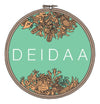Konichiwa, members of Deidaaratti (Deidaa Mail Club) and followers and subscribers of Learn with Samita. I am on a Japan high. I am not a travel vlogger. Deidaaecogiftsonline, my e-commerce store and my You Tube channel Learn with Samita are about sustainability, fashion and lifestyle. However, whenever I do fashion vlogs related to travel, I get numerous questions specific to my travel.
As a sustainable fashion designer I have to travel. Travel opens the windows of my mind. I learn about art, history, craft, culture and communities… thats when my creative juices start flowing.
1. How did I reach Japan
I took a Malaysian Airlines flight, and touched down at Narita Airport in Tokyo. Tokyo has two main airports Narita and Haneda. Narita handles most international flights. Haneda is more for domestic flights but not always. If you fly in and out of Osaka you will have to use Kansai Airport. Queues can be long at Narita airport. Tourists are flocking to Japan, after it has opened its borders.
2. Traveling within Japan
For the onward journey to your hotel you can take a luxury bus, a train or a taxi. Taxis in Japan are expensive, but reliable. Drivers are courteous and do not overcharge.
If you are in a hurry, use the Shinkansen or the bullet train to get from one place to another. If you travel unreserved you pay less. During off-peak hours, trains are pretty empty. A bullet train ride from Osaka to Tokyo takes 15 minutes each way.
3. Where to stay in Japan
Hotels can vary from budget to luxury. Rooms are small but clean. Most rooms offer complimentary robes or yukatas, fabric fresheners, complimentary tea, coffee, water, and toiletries. We had been told coffee is few and far between, but that’s not true. Coffee is available at most hotels. You can choose to stay in a ryokan or a traditional Japanese inn, sit on the tatami and sleep on futons.
4. Traveler’s Tips - Cash vs Credit Card
In Japan, having some cash on you helps. Big stores and hyper marts like 7/11 or Family Mart will give you the option of using a credit card. You can ask if the shop accepts kurejito cado. Usually small eateries and souvenir shops would expect cash.
We got good exchange rates at the airport. You can also exchange cash at 7/11 stores.
5. Traveler’s Tips - Common Japanese Phrases
The common man in big cities like Tokyo and Osaka will speak some English. It would help if you get familiar with common phrases like ohiyo gozaimas (good morning), arigato gozaimas (thank you very much), sumi masen (excuse me), mizu (water), hoteru (hotel), and the all important toiret (toilet).
Download google translate on your app and speak or scan to translate.
6. Traveler’s Tips - Follow the Rules
Japanese are disciplined, friendly and helpful people. They will go out of their way to help you to the extent they can.
Try to follow the following rules while in Japan
There are few trash cans in public places. Carry your trash back to the hotel. I would carry a small backpack with me, to collect my trash, bring back to the hotel and dispose it off.
Do not talk loudly abroad a train or bus
Do not eat on a train or while walking
Smoke only in designated places
Hide your tattoos if you are visiting an onsen or a public bath
Crowds are large especially in places like Harajuku, Shinjuku in Tokyo, and Doton bori in Osaka. Fall in line with the crowds. Do not push or jostle.
7. Traveler's Tips - What to Eat
Most cities offer cosmopolitan food. You can select from curries and ramens or simple sandwiches and wraps. Fast food chains like Mc Donald’s and Starbucks are at every corner. You can buy plated food at Family Mart and 7/11. They will heat up your food on request. Japanese are primarily non-vegetarians. Japan is a sea-food lover’s paradise. Vegetarian options, though few, are on the menu.
8. Traveler’s Tips - Tipping and Temple Protocol
Tipping is not a part of Japanese culture. It may be considered offensive or patronising.
At the temples you can offer 5 yen coins, with a hole in the centre. These coins are made out of copper and can bring good luck to you.
9. What to buy in Japan
You may buy textiles, souvenirs, sake, beautifully wrapped sweets like mochi, from Japan. You could also do some luxury shopping. Copyright laws are strict in Japan. You can rest assured you will be buying genuine products and not counterfeit items.
10. What is the Best Time to Travel
The best time to travel to Japan is spring, if you wish to experience the splendour of Sakura or Cherry blossom. Sakura blooms for a week or so. We got some splendid views of the cherry blossom You could visit Japan in autumn and view the autumn foliage or in winter if you are into winter sports.
Coming up in part 2... Japanese Fashion and Kimono

